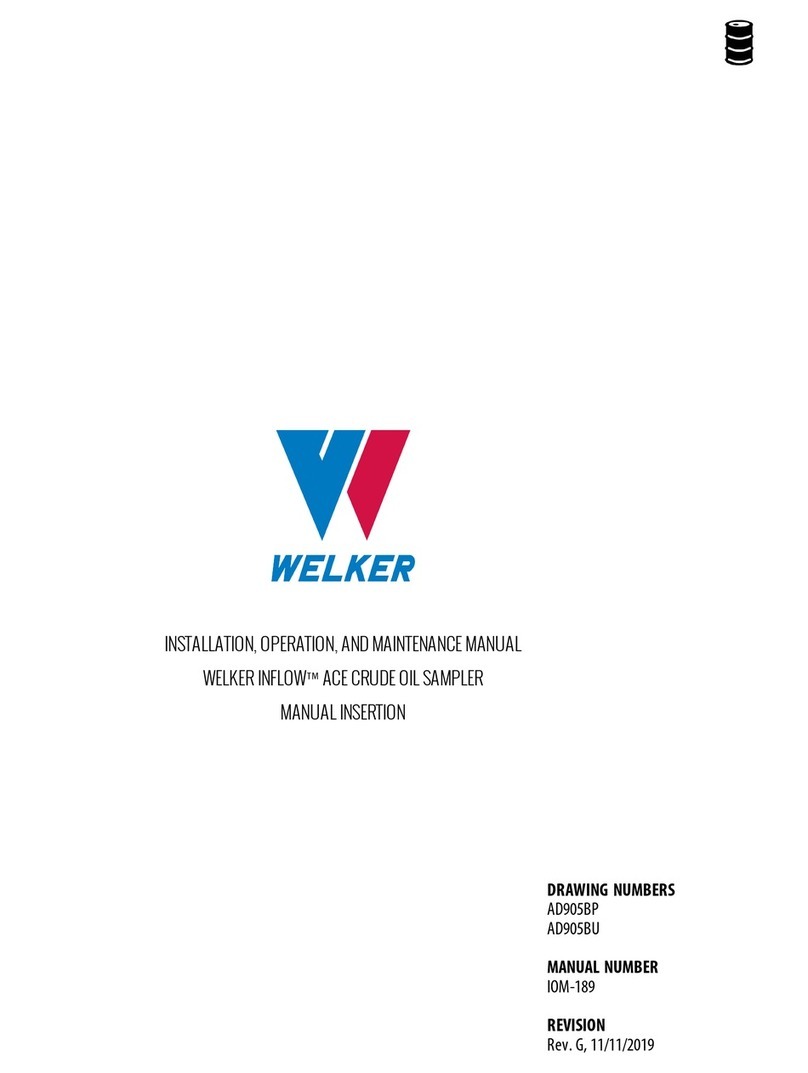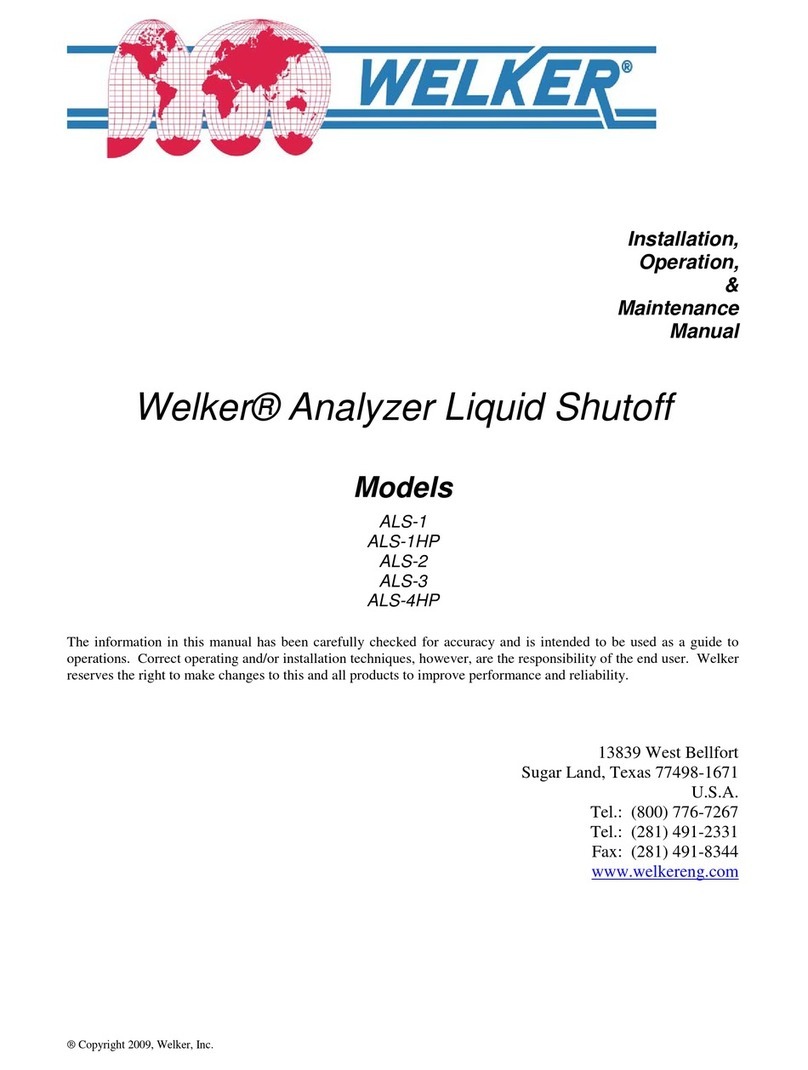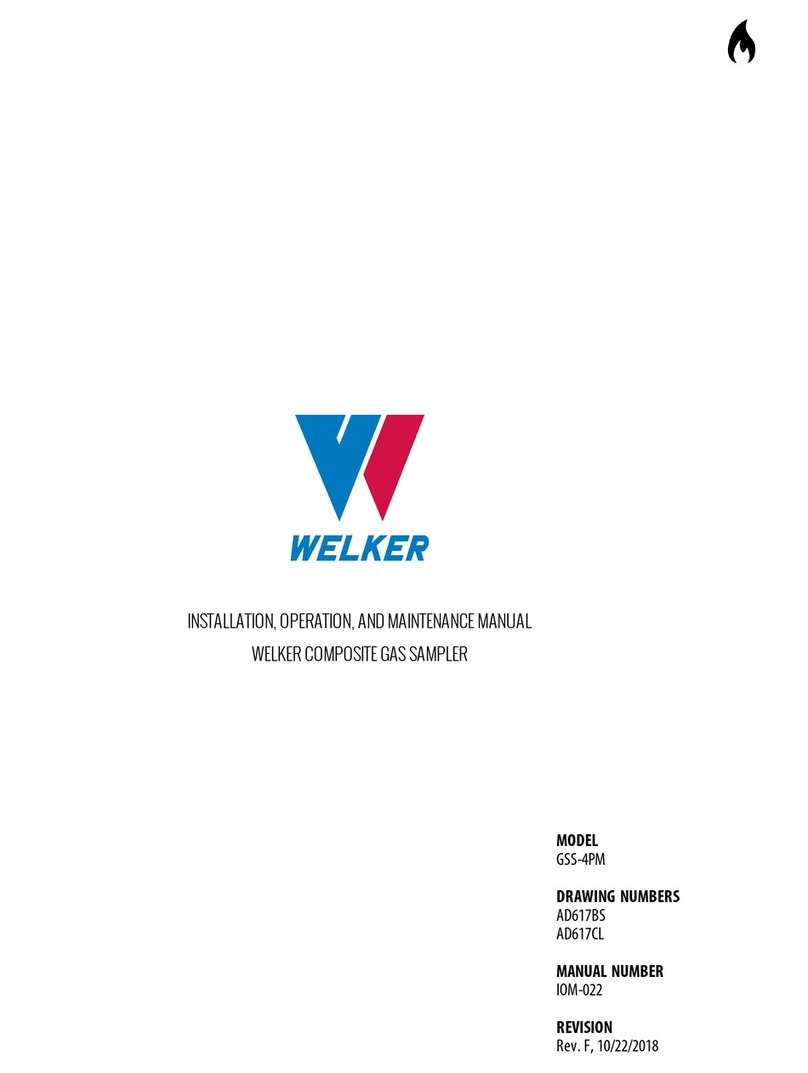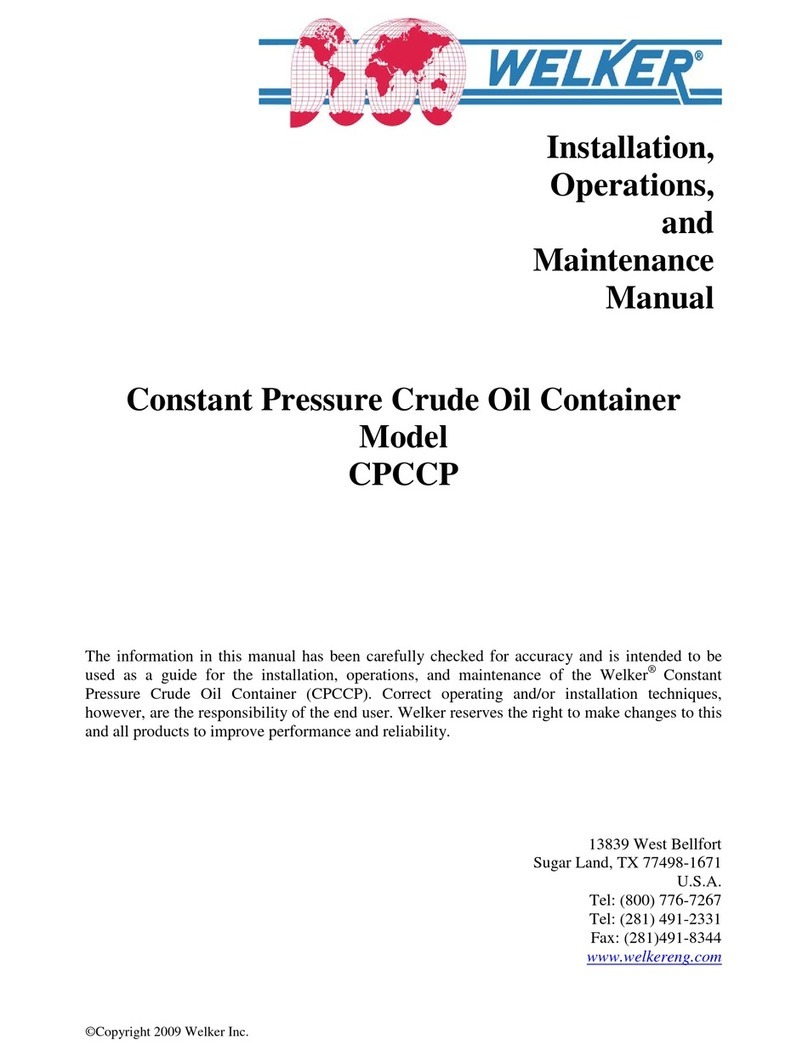
1.3 Specifications
The specifications listed in this section are generalized for this equipment. Welker can modify the equipment according to your
company's needs. Please note that the specifications may vary depending on the customization of your equipment.
Table 1: PP-1 Specifications
Products Sampled Gases and Liquids Compatible With the Materials of Construction
Material of Construction 316/316LStainless Steel
Maximum Allowable Operating Pressure
½" MNPT: 7700 psig @ -50 °F to 300 °F (530 barg @ -45 °C to 148 °C)
¾" MNPT: 7300 psig @ -50 °F to 300 °F (503 barg @ -45 °C to 148 °C)
1" MNPT: 5300 psig @ -50 °F to 300 °F (365 barg @ -45 °C to 148 °C)
Connections Pipeline: ½", ¾", or 1" MNPT
Product Inlet and Return: ¼" FNPT
InsertionDiameter ¼" (Standard)
³⁄₈"
Feature Scooped Tip on Inlet Probe
Options
45° Beveled Inlet Probe
Tungsten Carbide and Sulfinert®-Treated Sample Exposed Parts
CRNCertification
Table 2: PP-2 Specifications
Products Sampled Gases and Liquids Compatible With the Materials of Construction
Material of Construction 316/316LStainless Steel
Maximum Allowable Operating Pressure 3600 psig @ -20 °F to 120 °F (248 barg @ -28 °C to 48 °C)
Connections Pipeline: ½", ¾", or 1" MNPT
Product Inlet and Return: ¼" FNPT
InsertionDiameter ¼" (Standard)
³⁄₈"
Features Ball Valves
Scooped Tip on Inlet Probe
Options
45° Beveled Inlet Probe
Sulfinert®-Treated Sample Exposed Parts
Tungsten Carbide and Sulfinert®-Treated Sample Exposed Parts
CRNCertification
NACECompliance
Table 3: PP-3 Specifications
Products Sampled Gases and Liquids Compatible With the Materials of Construction
Material of Construction 316/316LStainless Steel
Maximum Allowable Operating Pressure 3600 psig @ -20 °F to 120 °F (248 barg @ -28 °C to 48 °C)
Connections Pipeline: ¾" MNPT (Others Available)
Product Inlet and Return: ¼" FNPT
InsertionDiameter ³⁄₈"
Features Needle Valves
Scooped Tip on Inlet Probe
Option 45° Beveled Inlet Probe
5IOM-101 MODELS: PP-1, PP-2, PP-3, and PP-F REV: C 13839 West Bellfort Street, Sugar Land, TX 77498 welker.com Service Department 281.491.2331
































